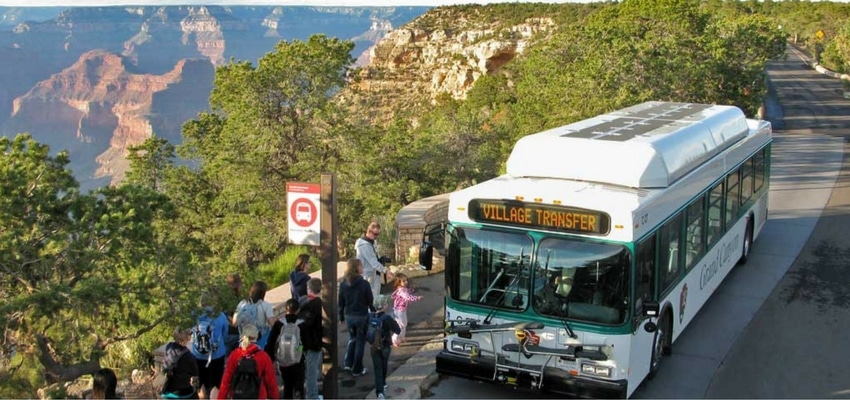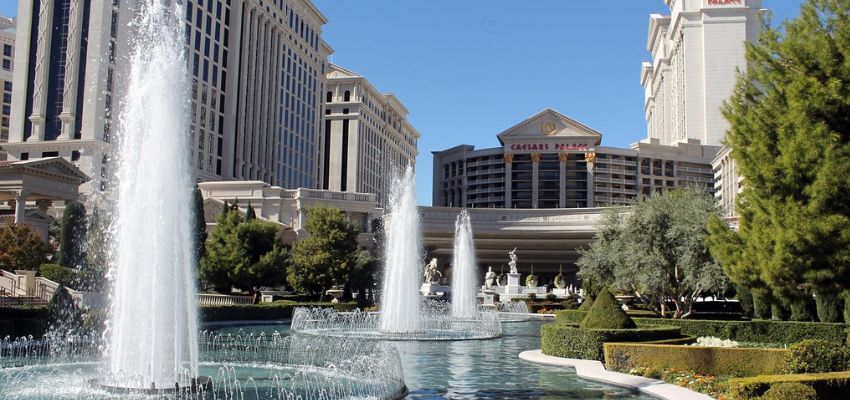Should I Drive to the Grand Canyon from Las Vegas or Take a Guided Tour?

The Grand Canyon is within relatively reach for those visiting Las Vegas, and for many Vegas visitors, the question isn’t “should I go to the Grand Canyon”?—it’s “should you take the wheel or let someone else do the driving?”.
Both options offer unforgettable adventures, but your decision to take a guided tour or drive to the Grand Canyon will shape the kind of experience you have.
Whether you drive yourself to the Canyon or take a guided tour is ultimately up to you, your travel needs, and what kind of experience you’re looking for. Driving yourself and taking a guided tour both offer a number of advantages and disadvantages, so we’ve outlined both to help you plan your perfect Grand Canyon adventure.
Taking a Guided Tour
If you’re looking for a stress-free, immersive experience where the only thing you need to do is soak in the breathtaking views, a guided tour is your best bet.
Many visitors prefer the convenience and relaxation of simply sitting back and enjoying the ride to the Canyon. Plus, your tour guide will bring the Canyon to life by explaining the history and geology of the Grand Canyon and showing you all the best viewpoints—something you’ll miss out on if you choose to drive yourself.
Advantages of Guided Tours
- No driving, no hassle. Just sit back and relax as you make your way through the Southwest. Plus, you won’t have to deal with renting a car, parking at the Canyon, or driving through inclement weather.
- Adventure on your terms. You can see the Grand Canyon by helicopter, airplane, bus, boat, or even by ATV or whitewater raft. Imagine soaring above the Canyon by helicopter and taking in the unforgettable bird’s eye view of the stunning landscape below!
- You’ll learn things. Guided tours are led by friendly and knowledgeable tour guides who are chock full of great trivia and history about the Grand Canyon and the surrounding area.
- You get more bang for your buck. On a guided tour, you’ll see more than just the Grand Canyon. You can also see places like the Hoover Dam, Kingman, AZ, and other local attractions en route to the Canyon.
- No chance of getting lost. When you drive yourself, you run the risk of taking a wrong turn, but when you take a guided tour, you don’t have to worry about navigating your route.
- Ideal for spontaneous travelers—less advanced planning is required! Simply book and go.
Disadvantages of Guided Tours
- You’re on a set schedule. One of the drawbacks of taking a guided tour is following the preset tour schedule.
- You have less control. On a guided tour, you’ll visit the viewpoints and attractions your guide selects. While you’ll still hit the best spots, driving yourself offers more flexibility.
Driving Yourself to the Grand Canyon
For those who love the open road, driving from Las Vegas to the Grand Canyon is an adventure in itself. Winding through the rugged desert landscape, you’ll be your own tour guide, setting the pace and itinerary as you make your way to one of the most iconic landmarks in the world.
Check out our Las Vegas-Grand Canyon road trip itinerary:
Read the Las Vegas-Grand Canyon road trip itinerary for details on stops, driving times, and more.
Advantages of Driving Yourself to the Grand Canyon
- You can totally customize your Grand Canyon experience. See the viewpoints you want to see when you want to see them without worrying about keeping to a schedule. If you decide you need more time, want to check out one of the hiking trails, or explore the many shops and restaurants, you’re free to stay longer and explore.
- You can stay overnight if you like. If you drive yourself, you’ll have the flexibility to stay overnight at the Grand Canyon, which is often recommended for travelers driving from Las Vegas due to the length of the drive and the number of things to see and do at the Canyon.
- You’ll have more time to explore the Canyon. If you’re someone who loves the freedom to explore on your own terms, driving lets you discover hidden gems along the way, take detours, or extend your stay for a sunrise or sunset that leaves you speechless.
- You can stay for sunrise or sunset—the best times to view the Grand Canyon. Just be sure to remember that during certain times of year, there’s a time zone difference between Las Vegas and the Grand Canyon.
Disadvantages of Driving Yourself to the Grand Canyon
- Parking can be difficult. With 5 million visitors each year, finding a parking spot can be a challenge. Arriving early or checking alternative parking options is key to avoiding this headache.
- It’s a long drive. The drive to the South Rim is at least five hours in each direction, so unless you have the time to stay overnight, you’re in for a long day and a lot of driving. You’ll also have to plan your route so you don’t have to worry about getting lost.
- You need to plan early—hotels and other accommodations at the Grand Canyon can book up to a year in advance, so don’t plan on staying overnight if you’re planning a last minute trip. If you’re planning a last-minute trip, a guided tour might be your best option.
- Road conditions vary. The roads to the South Rim are all paved and of excellent quality, but if you want to visit the West Rim (which is about 150 miles closer to Las Vegas), be prepared for a bumpy ride.
- You’ll have to pay access fees. Entry to the Grand Canyon National Park (including the South and North Rims) costs $35 for a single vehicle, whereas entry to the West Rim tourist area starts around $51 per person.
FAQs: Planning Your Grand Canyon Visit from Las Vegas
1. How long does it take to drive from Las Vegas to the Grand Canyon?
The Grand Canyon is open year-round, but the best times to visit are in the spring (March to May) and fall (September to November) when the weather is mild and the crowds are smaller. If you’re planning to drive, these seasons also offer more comfortable road conditions.
Read our guide to help decide when to visit the Grand Canyon.
2. What is the best time of year to visit the Grand Canyon?
Yes, it’s possible to visit the Grand Canyon in a day from Las Vegas, especially if you’re heading to the West Rim. If you plan to visit the South Rim, be prepared for a long day of driving or consider upgrading to an airplane or helicopter tour to cut down your travel time.
3. Can I do a day trip to the Grand Canyon from Las Vegas?
Yes, it’s possible to visit the Grand Canyon in a day from Las Vegas, especially if you’re heading to the West Rim. If you plan to visit the South Rim, be prepared for a long day of driving or consider upgrading to an airplane or helicopter tour to cut down your travel time.
4. What are the main differences between the West Rim and the South Rim?
The West Rim is closer to Las Vegas and offers attractions like the Skywalk, but it is not part of Grand Canyon National Park. The South Rim, located further away, is part of the national park and is known for its expansive views and popular hiking trails.
Get our advice on whether you should visit the Grand Canyon South or West Rim.
5. Is parking difficult at the Grand Canyon?
Parking can be challenging, especially during peak seasons at the South Rim. If you’re driving yourself, try to arrive early (before 10 AM).
6. What should I bring with me on a Grand Canyon tour or road trip?
Whether you’re taking a guided tour or driving yourself, you should bring water, sunscreen, comfortable walking shoes, a hat, sunglasses, and a camera. If you’re driving, make sure to also have a full tank of gas and snacks for the road.
Be sure to pack everything you need with our Grand Canyon packing list.
7. Do I need a permit or reservation to visit the Grand Canyon?
You don’t need a permit or reservation to visit the South or North Rim. However, if you’re visiting the Grand Canyon National Park at the South or North Rim, you will need to pay the entrance fee ($35 per vehicle for a seven-day pass). No additional permits are required unless you plan on doing any overnight hiking, backcountry camping, or river trips. The West Rim, on the other hand, requires a separate entrance fee (starting at $51 per person).
8. Can I visit both the Hoover Dam and the Grand Canyon in one trip?
Yes, you can absolutely visit the Hoover Dam and Grand Canyon on one trip—in fact, many of our guided tours include a stop at the Hoover Dam! If you’re driving yourself, you can also stop at the Hoover Dam on your way to the Grand Canyon.
9. Is it safe to drive from Las Vegas to the Grand Canyon in winter?
Yes, it’s typically safe to drive from Las Vegas to the Grand Canyon in winter. However, while the roads to the Grand Canyon are generally well-maintained, winter conditions (especially at the South Rim) can include snow and ice, making driving more difficult. Be sure to check weather conditions and have a reliable vehicle if you plan to drive in winter.
Here’s what you need to know about visiting the Grand Canyon in winter.

